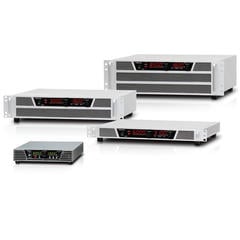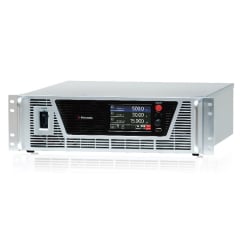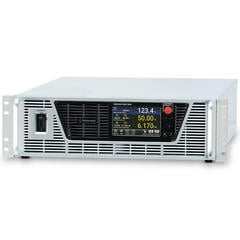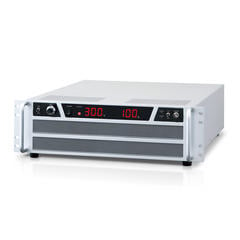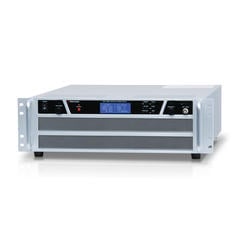An electric vehicle (EV) is a vehicle that runs on electric energy, powered by a motor. Since they do not emit exhaust gas, they are rapidly gaining popularity in recent years as eco-friendly vehicles. It is equipped with a high capacity lithium-ion battery pack and a high-power motor for driving. The output from the lithium-ion battery is DC current, but the drive motor of electric vehicles is an AC motor. Therefore, an inverter that converts the DC current into three-phase AC must also be installed.
A harness is also essential to ensure the safe and reliable transmission of high-voltage electricity. Electric vehicles use the back EMF from the motor to save energy. Therefore, in the development of motors and inverters for electric vehicles, it is also necessary to conduct tests using regenerative DC power supplies.
The most common battery voltage installed in electric vehicles is around 300 V to 400 V. Motor, and battery capacities are expected to become high voltage and high power in the future in order to improve driving range.
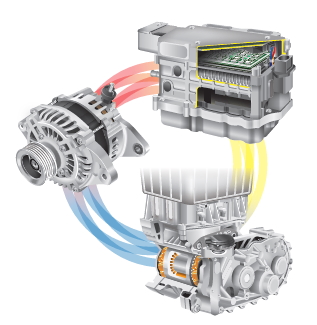
Matsusada Precision has a models of DC-stabilized power supplies and regenerative power supplies that can be used to evaluate various electrical components such as motors, inverters, and DC/DC converters. We also have a models that can handle high voltages of 800 V or more, so we can make proposals in anticipation of higher voltages.
Example of using a power supply made by Matsusada Precision
- Development and evaluation of bidirectional inverters and converters
- Development and evaluation of magnetic materials for motors
- Evaluation of ignition coils
- Development of current sensors and shunt resistors
- Development and evaluation of motors and peripheral equipment
- Evaluation of electromagnetic valves
- Development and evaluation of connectors

- Related words:
-
- Traction Motor
- Traction Inverter
- Lithium-ion Battery
- DC/DC Converter
- Harness
- On-Board Charger (OBC)
- Bidirectional EV charge
- Fuel Cell Vehicle (FCV)
- Vehicle to Grid (V2G)
- Vehicle to Home (V2H)
- Vehicle to Load (V2L)
- Battery Electric Vehicle (BEV)
Recommended products
Information on related articles in Technical Knowledge
- Electric Vehicle Motors: Battery and Supply Voltage
- From Engine to Motor -Unit Conversion from Horsepower to kW-
- Battery Types and Characteristics (Basic Knowledge)
- Battery Types and Characteristics of Charge Control
- Fuel Cell Basis and Benefits
- What is a power inverter? (Basic knowledge)
- All about Next-Generation Energy "Hydrogen"




